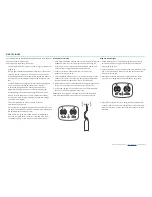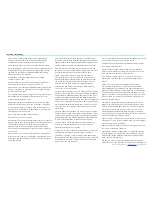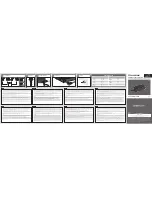
For more product information visit |
www.FatShark.com
| All Rights Reserved
FIRST FPV FLIGHTS
Now it’s time to don the goggles and start flying FPV (or First
Person View). Many pilots find flying in FPV easier because yaw
simply changes the view on the goggles and forward, back, left and
right move relative to that view. Either way, it’s important to take
your time to learn basic movements (above) before you begin this
section.
Power the headset on first, and check the band for other users
before powering up the quadcopter. If necessary, select an open
channel on the aircraft and headset.
IMPORTANT: Wait for other pilots to land before powering on.
The transmitter will output a video signal which could impair
another user’s video reception and cause a crash. Only select video
frequencies and verify there is no interference when there is nobody
flying.
Before you begin, keep these tips in mind:
•
In flight, apply measured, deliberate movements of the control
sticks; do not jam the controls to the limits. The controls will
respond proportionally, move them a little bit and the response
will be slow, move them aggressively and the response will be
fast.
•
For the first flights, all flying should take place in the beginner
mode (with the left switch up or away from the pilot).
In advanced flying modes the Shark Quad will fly more
aggressively, limiting the efficacy of this training program.
•
Avoid applying throttle movement aggresively up or down,
which will cause the quad to rise or plummet sinusoidally.
Get accustomed to carefully managing throttle to manage a
controlled rise or decent.
• Each step in this guide is intended to be performed with at
least one complete battery. Take your time and if you’re not
comfortable with a certain step, fly a few extra batteries.
Step 1: Short Hops and Yaw Control
First FPV flights while wearing the goggles should concentrate
on simple takeoffs and landings between two fixed points with
minimal yaw movement.
1.
Set two racing gates flat on a smooth surface approximately
six feet apart and directly in front of one another in a line with
the pilot. Place the Shark Quad in the center of the closest gate,
pointed at the other gate.
2.
Put on the goggles and ensure that you are receiving a strong
signal.
3.
Take off, try to hold an altitude of one foot or so and press
forward on the pitch to fly towards the other gate.
4.
After landing in the second gate, give the quadcopter a little bit
of throttle and use the yaw control to spin the quad back facing
the other gate.
5.
Take off and repeat the process.
Step 2: Longer Hops
Now try making the same flights over a longer distance.
1.
Attempt to pick up a little more speed while still maintaining
full control.
2.
Do not go faster than you can control, you need to be able to
slow down and land under control in the other gate.
Step 3: Flying a Circuit and Landing
Now let’s combine yaw and flight.
1.
Leave one gate out flat on the ground in the center of the flight
area. Place the quadcopter in the gate and put on the goggles.
2.
Take off, and fly away from the gate then make a wide
coordinated turn to one side using a little of both yaw and roll
to fly through the turn. Steer with yaw; shift sideways with roll.
3. Keep moving forward in the turn until you complete a circle
around the flight area.
4.































